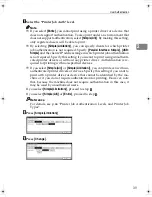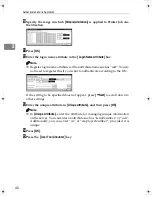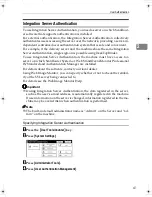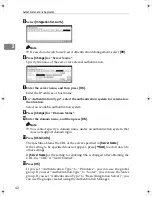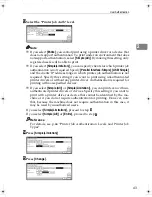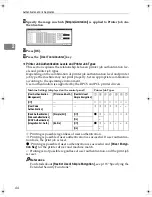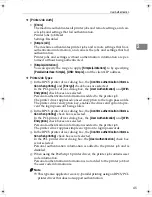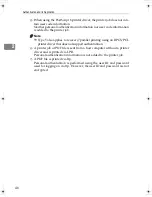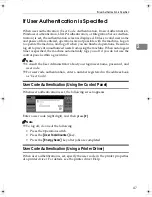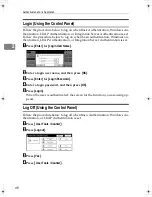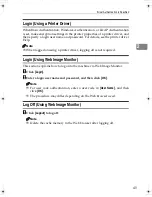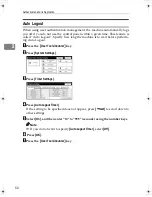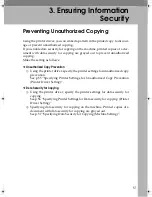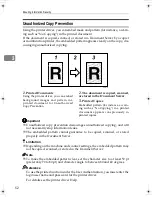
User Authentication
37
2
LDAP Authentication
Specify this authentication when using the LDAP server to authenticate users
who have their accounts on the LDAP server. Users cannot be authenticated if
they do not have their accounts on the LDAP server. The address book stored in
the LDAP server can be registered to the machine, enabling user authentication
without first using the machine to register individual settings in the address
book. When using LDAP Authentication, to prevent the password information
being sent over the network unencrypted, it is recommended that communica-
tion between the machine and LDAP server be encrypted using SSL. You can
specify on the LDAP server whether or not to enable SSL. To enable this, you
must create a server certificate for the LDAP server.
Using Web Image Monitor, you can specify whether or not to check the reliabil-
ity of the SSL server being connected to.
For details see the Web Image Monitor Help.
Important
❒
During LDAP Authentication, the data registered in the LDAP server, such as
the user’s e-mail address, is automatically registered in the machine. If user
information on the server is changed, information registered in the machine
may be overwritten when authentication is performed.
❖
Operational Requirements for LDAP Authentication
To specify LDAP authentication, the following requirements must be met:
• The printer fuction or HDD must be installed.
• The network configuration must allow the machine to detect the presence
of the LDAP server.
• When SSL is being used, TLSv1, SSLv2, or SSLv3 can function on the LDAP
server.
• The LDAP server must be registered in the machine.
For details about registration, see General Settings Guide.
Limitation
❒
Under LDAP authentication, you cannot specify access limits for groups reg-
istered in the LDAP Server.
❒
When using LDAP Authentication, you cannot use reference functions in
LDAP Search for servers using SSL.
❒
Enter the user’s login user name using up to 32 characters and login password
using up to 128 characters.
❒
Do not use double-byte Japanese, Traditional Chinese, Simplified Chinese, or
Korean characters when entering the login user name or password. If you use
double-byte characters , you cannot authenticate using Web Image Monitor.
D0086951_RussianC45-EN.book Page 37 Wednesday, May 31, 2006 11:45 AM
Summary of Contents for DSm725e
Page 8: ...2...

















